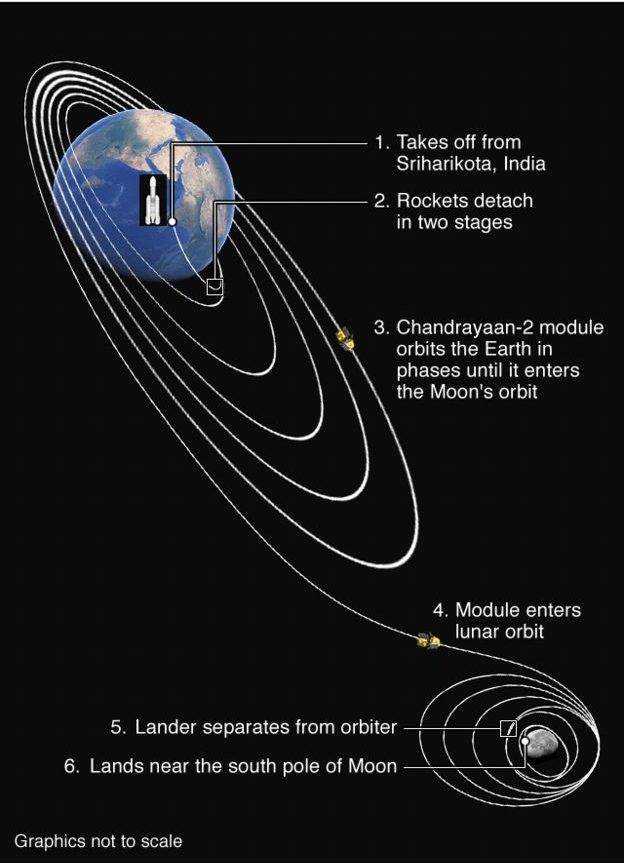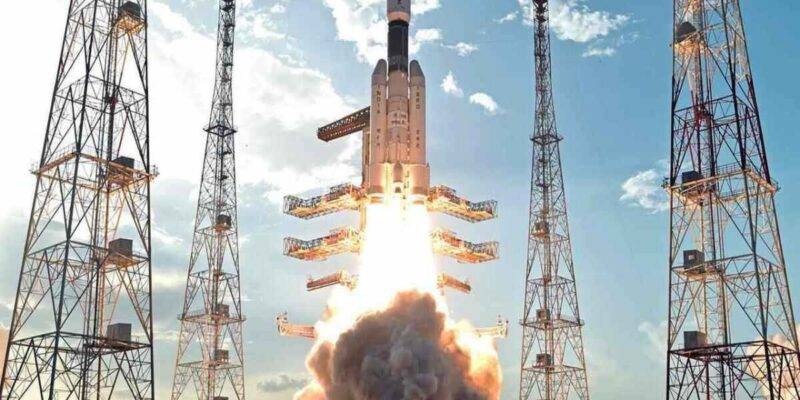India’s second space mission to the moon, Chandrayaan-2, just launched on 22nd July at 14.43 IST (12.13 pm EAT), an event that has been live-streamed on various social platforms including YouTube. The mission that was conducted by the Indian space agency, ISRO (India Space Research Organisation) has been successful and has been praised as a major milestone for the country.
The $150 million mission that had been delayed earlier on 15th July is hoped to be the first on to make an Indian spacecraft “take a billion dreams to the Moon.” When the vessel lands successfully on the moon’s south pole, as planned, it will be the first mission of its kind.
But this is a huge milestone in the space travel industry and for India, considering the mission was stopped at the countdown just before launch on July 15th after a “technical snag was observed in [the] launch vehicle system”, according to ISRO. According to reports from Indian media, a leak from a helium gas bottle in the cryogenic engine of the rocket was to blame for the unfortunate delay.
The scientists in charge of the mission immediately identified fuel drain from the rocket and resolved the glitch. But they still had to take some time and make sure everything was okay for the mission before giving any new dates. A source from the agency stated that “It was a simple to fix [but it was] a serious problem that could have resulted in total failure.” But the people were still resilient in their support for the mission, a sentiment that ISRO seemed to appreciate.
Launch of Chandrayaan 2 by GSLV MkIII-M1 Vehicle https://t.co/P93BGn4wvT
— ISRO (@isro) July 22, 2019
What is The Chandrayaan-2 Mission All About?
This mission is the second to India’s first-ever lunar mission, Chandrayaan-1 in 2008, one that did not land on the lunar surface but it luckily carried out the first and most detailed search for water on the moon using radars. The second moon vehicle, Chandrayaan-2 had been in the plans since as early as 2008 but has been postponed through the years till every detail was concluded and the launch initially scheduled for 14th July 2019.
The mission was developed to focus on the lunar surface, searching for water and minerals and measuring moonquakes, among other things.
The launch was then set to use India’s most powerful rocket, Geosynchronous Satellite Launch Vehicle Mark III (GSLV Mk-III), that weighs 640 tonnes and at 44 metres is as high as a 14-storey building.


Source: India Space Research Organisation
The spacecraft that weighs 2.379kg is divided into the orbiter, lander and a rover. The orbiter that has a mission life of a year, will take images of the lunar surface and “sniff” the tenuous atmosphere with the lander that weighs twice as much as the former carrying within its belly a 27kg Moon rover with instruments to analyse the lunar soil.
The rover that was designed to last 14 days, can travel up to half a kilometre from the lander and send data and images back to Earth for analysis.
But before all this is possible, the journey there is a 384,000km long one that ISRO hopes will get the lander to touch down on the Moon on 6 or 7 September as planned, despite the week-long delay of the launch. With India planning for this to be one of the cheapest space missions, India’s space agency chose a circuitous route to take advantage of the Earth’s gravity, which will help slingshot the satellite towards the Moon all in a bid to save fuel.


Source: India Space Research Organisation
According to ISRO chief, Dr K. Sivan, “There will be 15 terrifying minutes for scientists once the lander is released and is hurled towards the south pole of the Moon.” This is mainly because those who had been controlling the spacecraft until then will have no role to play in those crucial moments. The actual landing, he added, was an autonomous operation dependent on all systems performing as they should. Otherwise, the lander could crash into the lunar surface.
All we can do is congratulate the country for the launch and hope for a successful mission ahead that was planned and operated by 1,000 engineers and scientists with the expedition being steered by two women; programme director Muthaya Vanitha and Ritu Karidhal as the navigator.






Comments